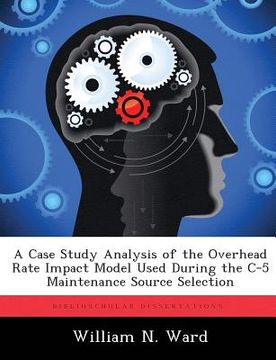Share
A Case Study Analysis of the Overhead Rate Impact Model Used During the C-5 Maintenance Source Selection (in English)
William N. Ward
(Author)
·
Biblioscholar
· Paperback
A Case Study Analysis of the Overhead Rate Impact Model Used During the C-5 Maintenance Source Selection (in English) - Ward, William N.
$ 48.80
$ 57.95
You save: $ 9.15
Choose the list to add your product or create one New List
✓ Product added successfully to the Wishlist.
Go to My WishlistsIt will be shipped from our warehouse between
Friday, July 12 and
Monday, July 15.
You will receive it anywhere in United States between 1 and 3 business days after shipment.
Synopsis "A Case Study Analysis of the Overhead Rate Impact Model Used During the C-5 Maintenance Source Selection (in English)"
The Overhead Rate Impact (ORI) model was used during the C-5 Maintenance source selection to evaluate the impact the new workload would have on the existing overhead rates. The objectives of this research study were to evaluate the ORI model and to identify the lessons learned from this source selection. To accomplish these objectives, interviews were conducted with members of the source selection team who were on the Cost Integrated Product Team (IPT). The experts were asked to identify the strengths and weaknesses of the ORI model and to make recommendation on how to improve the model. This study identified strengths and weaknesses of the ORI model. The strengths identified by the research are that the model was easy to use and the fact that the model can calculate overhead savings quickly. The weaknesses identified by the research are that the model uses an average overhead rate for the entire facility, the accuracy of the inputs is questionable, the model does not address limits to the amount of excess capacity, and that the model does not account for the theoretical limit to savings. Based on these findings, this research makes recommendations of how overhead savings should be evaluated in future source selections. The recommendations are that overhead savings should be calculated at the lowest possible level, the amount of existing excess capacity should be evaluated, the rate and factor inputs to the model should be validated at the lowest possible level, and evaluators must recognize the theoretical limit to potential overhead savings.
- 0% (0)
- 0% (0)
- 0% (0)
- 0% (0)
- 0% (0)
All books in our catalog are Original.
The book is written in English.
The binding of this edition is Paperback.
✓ Producto agregado correctamente al carro, Ir a Pagar.

